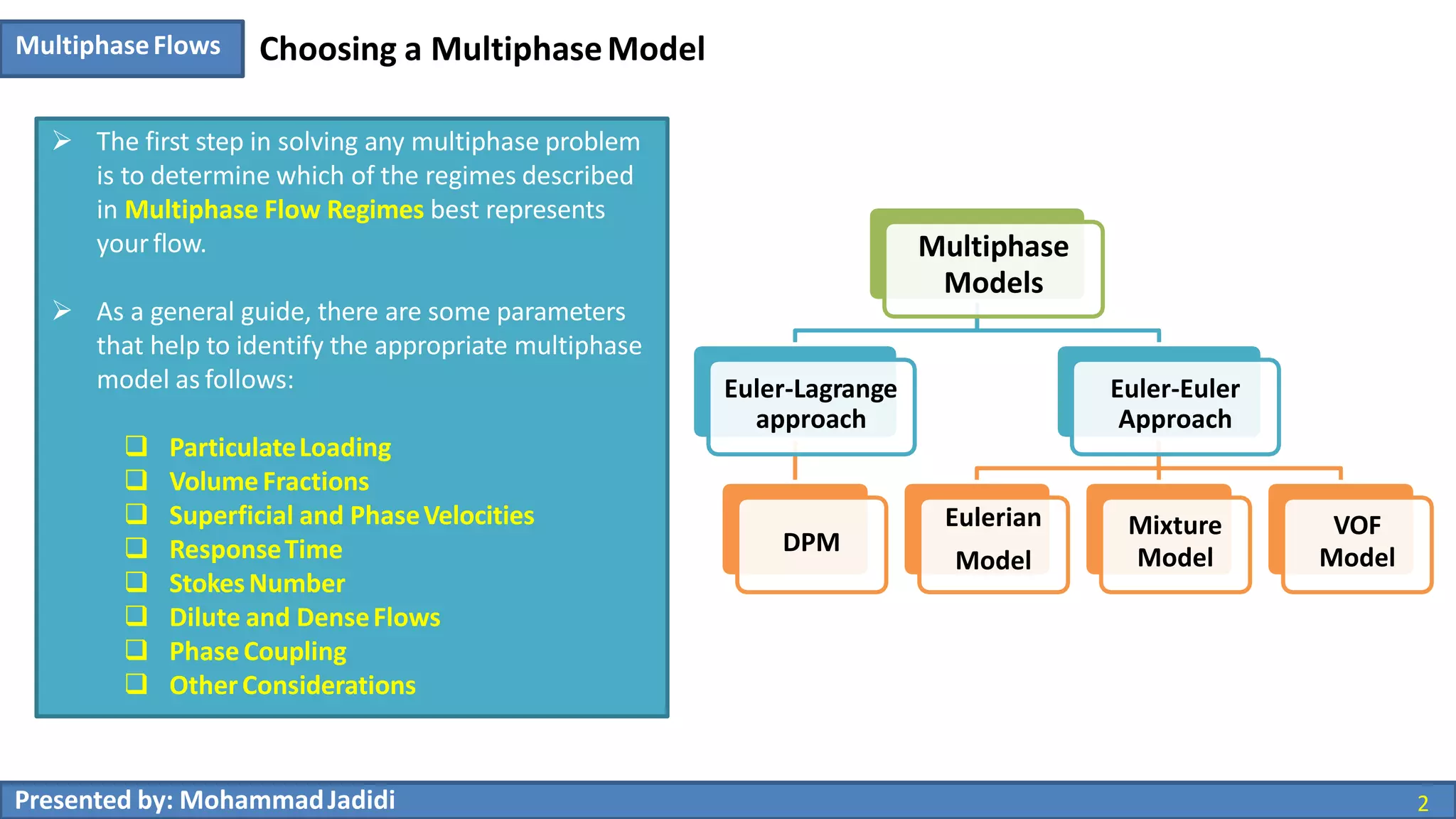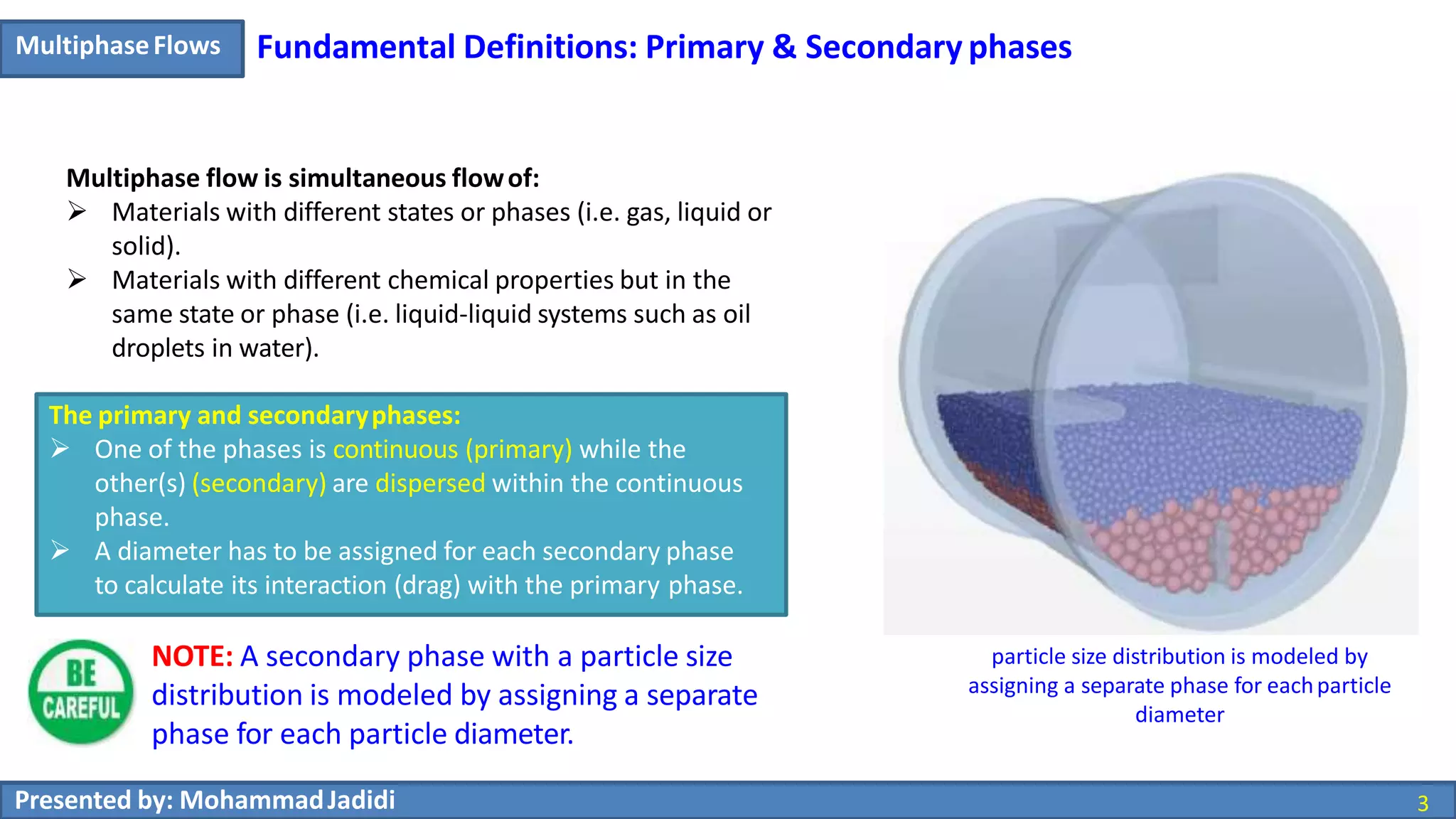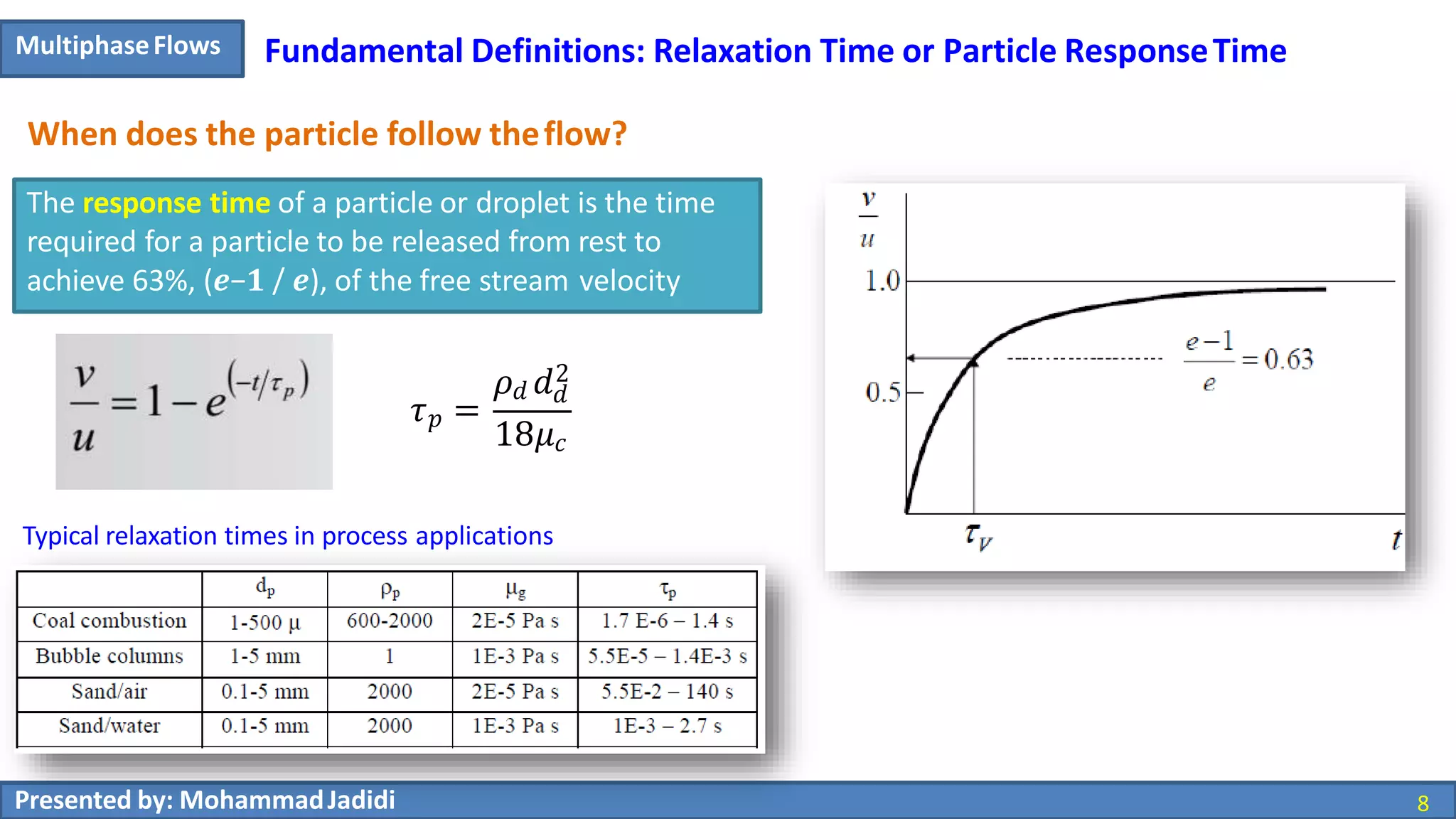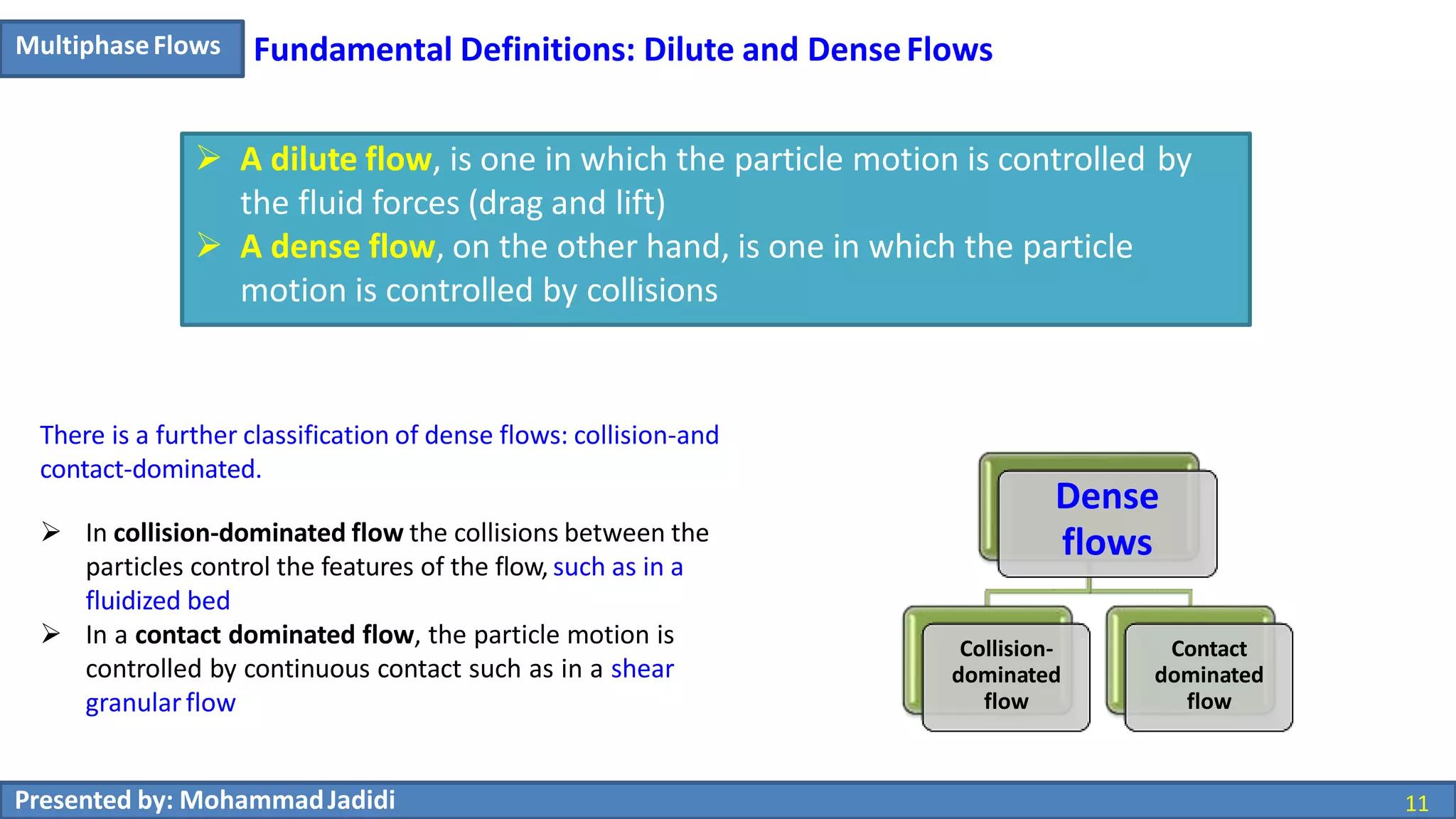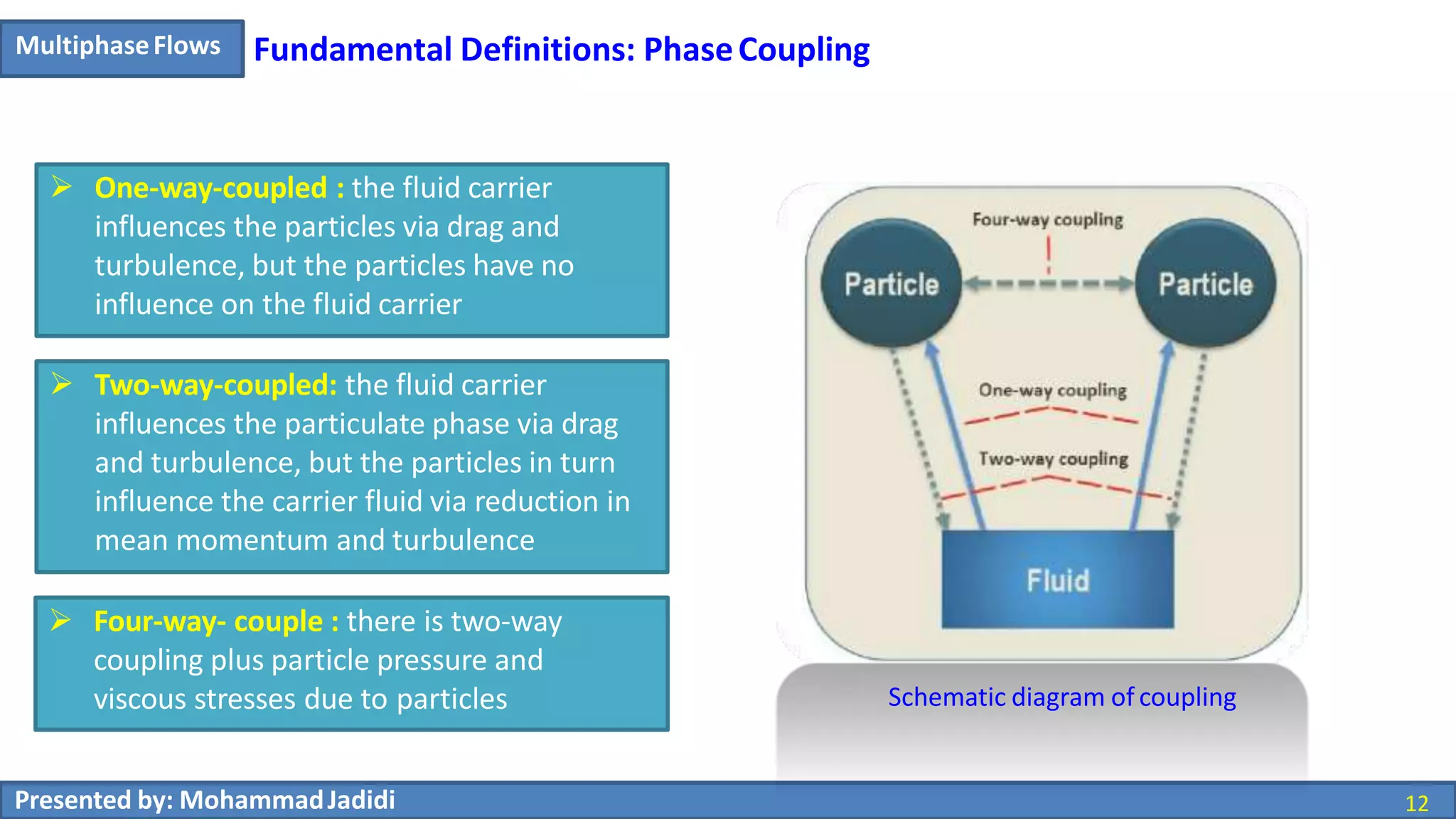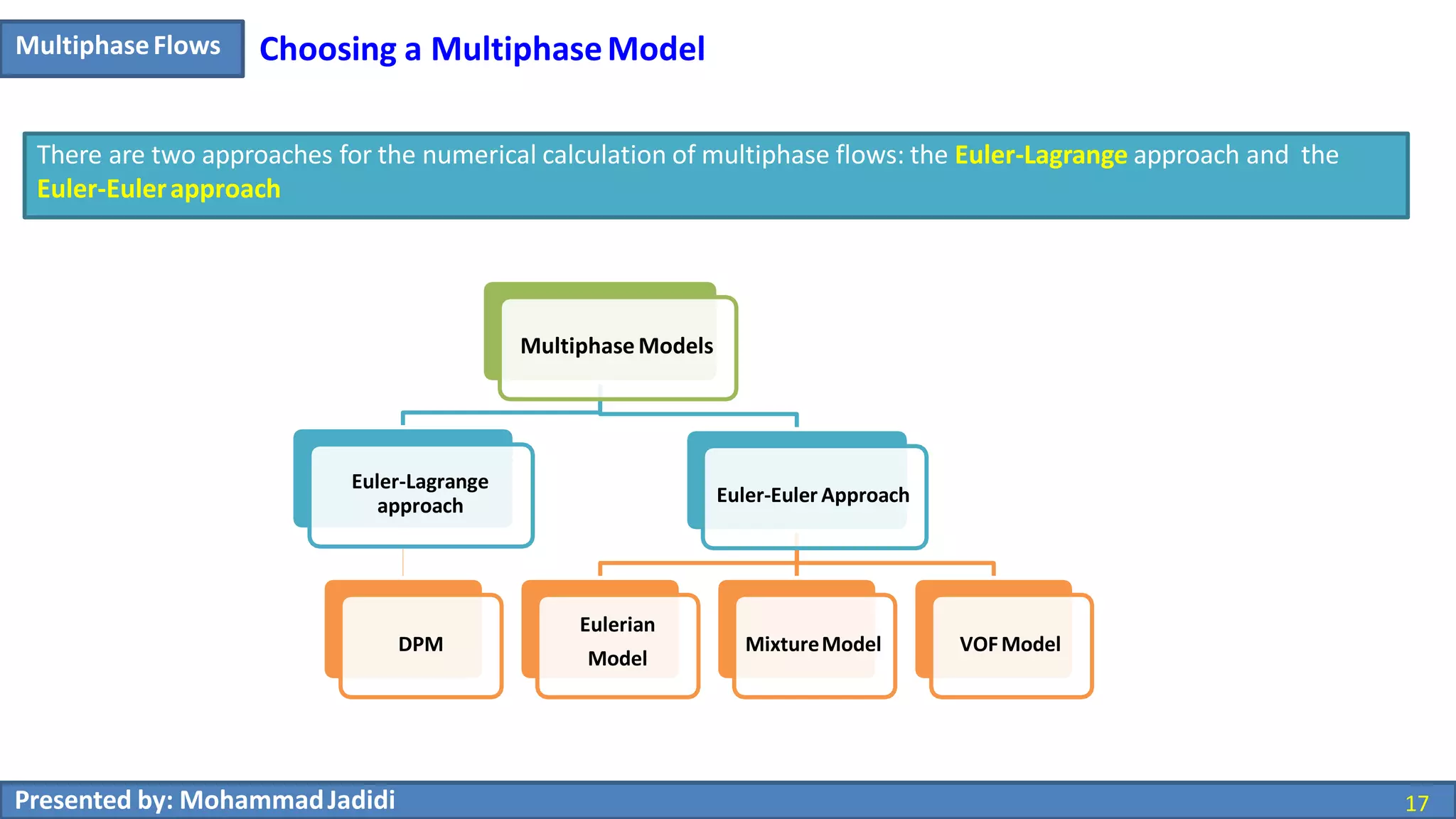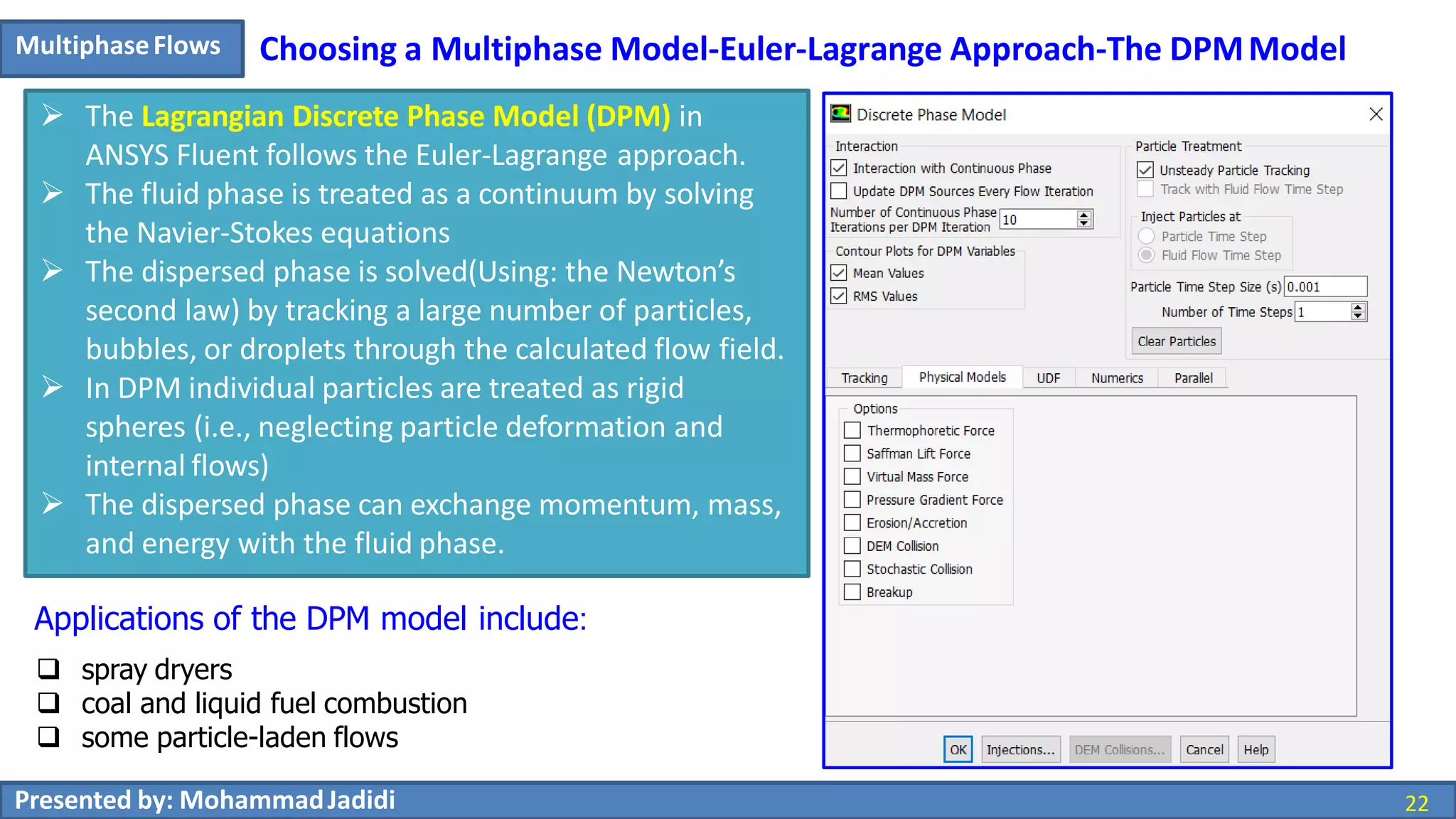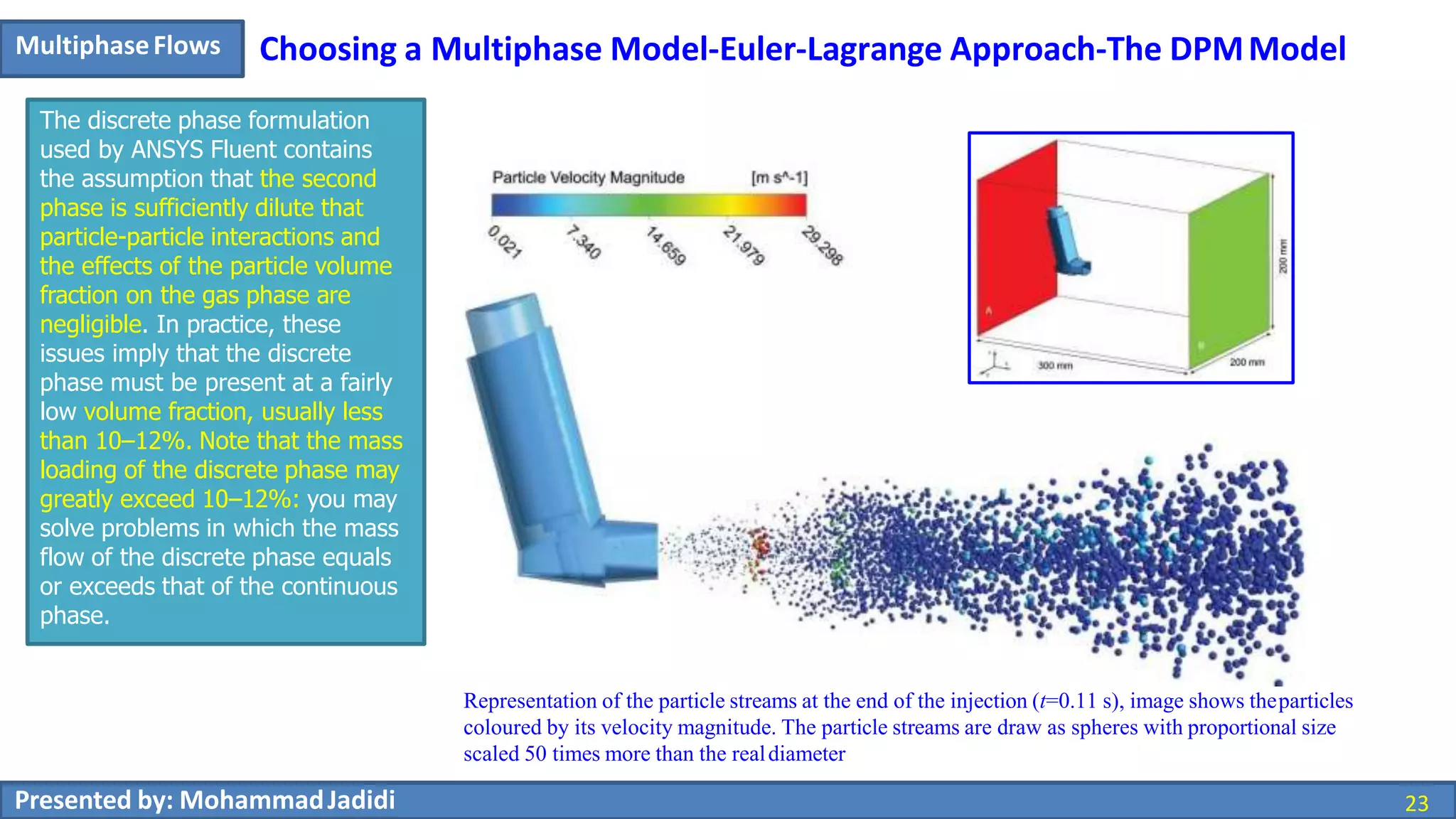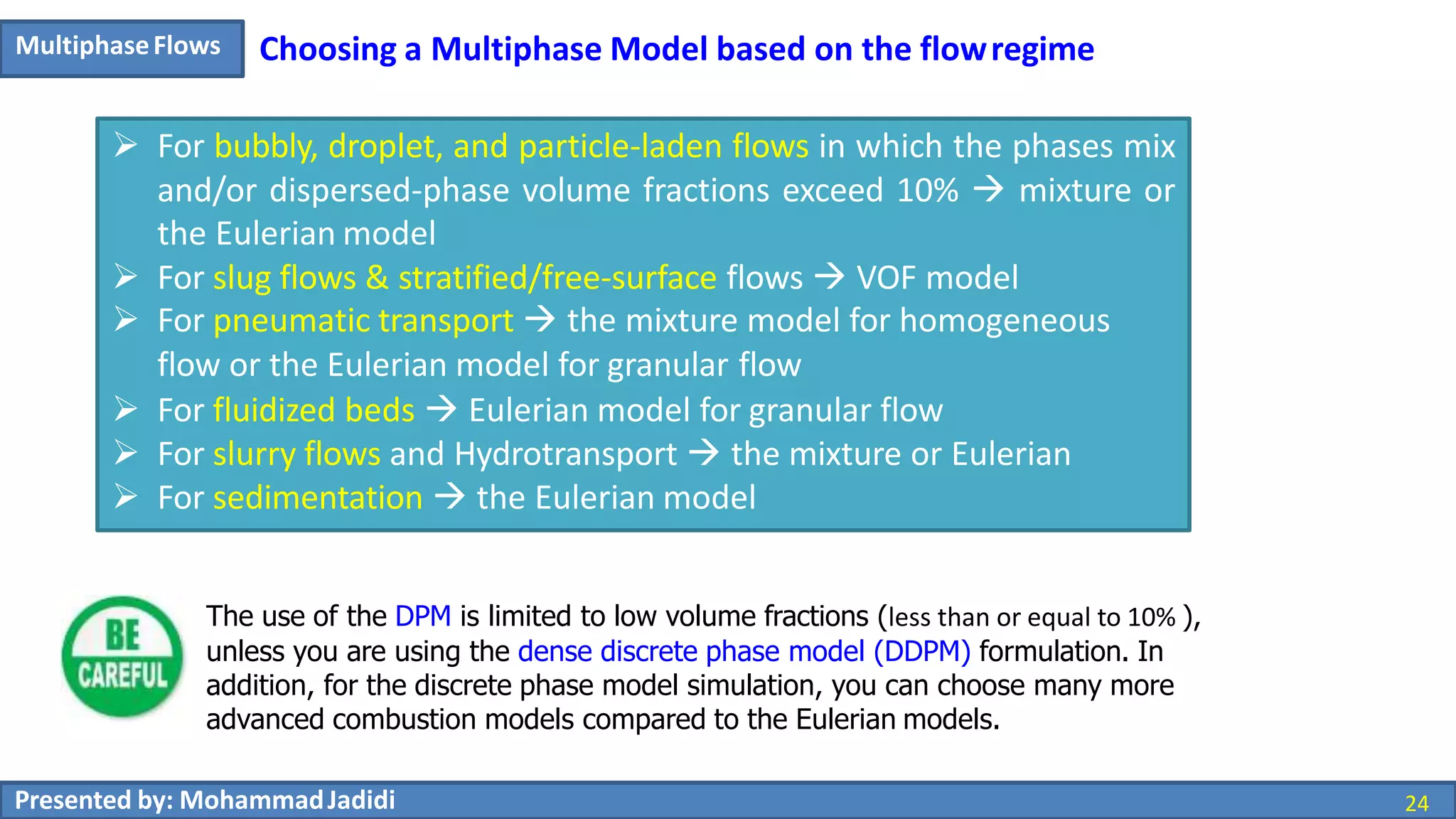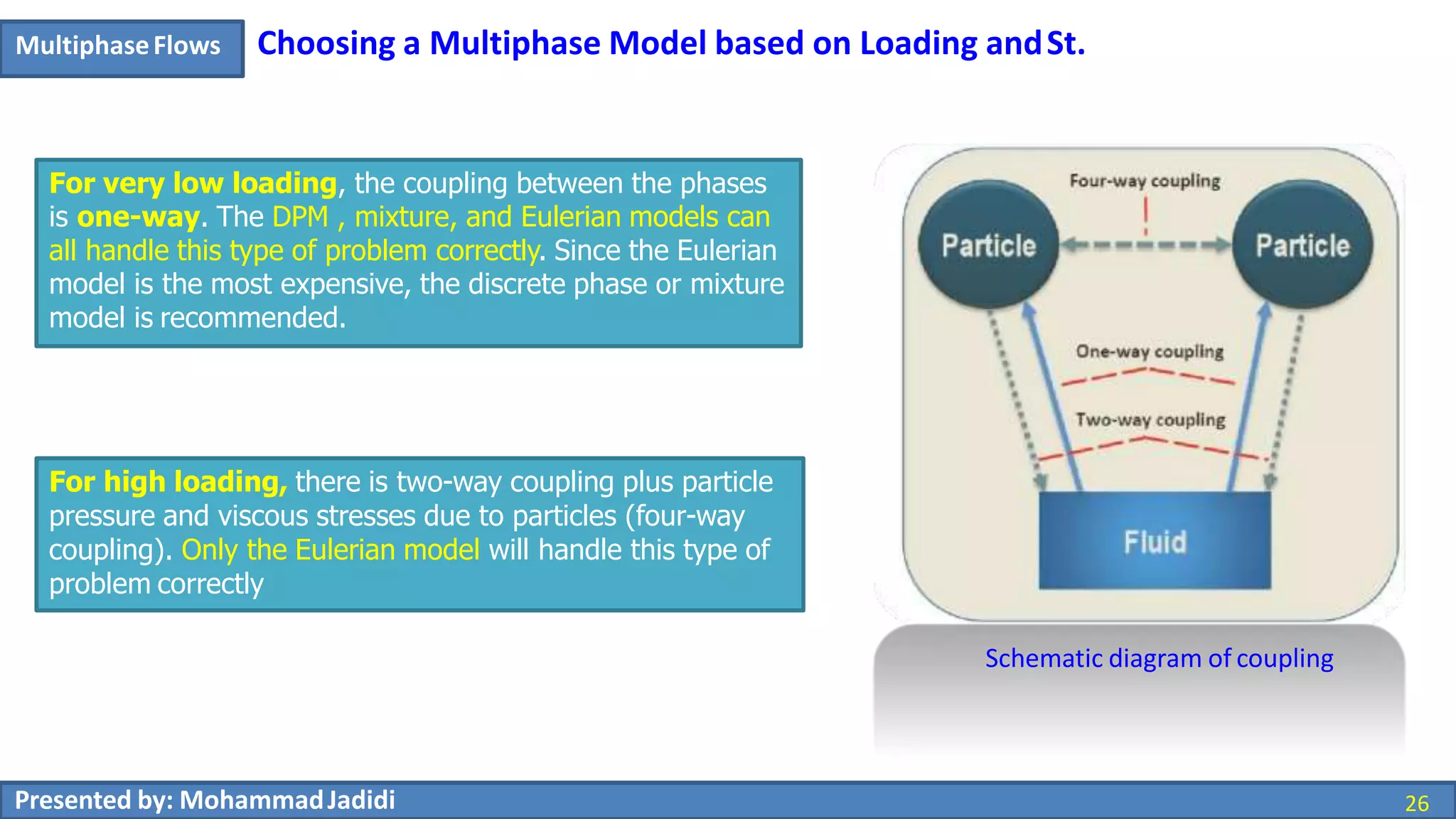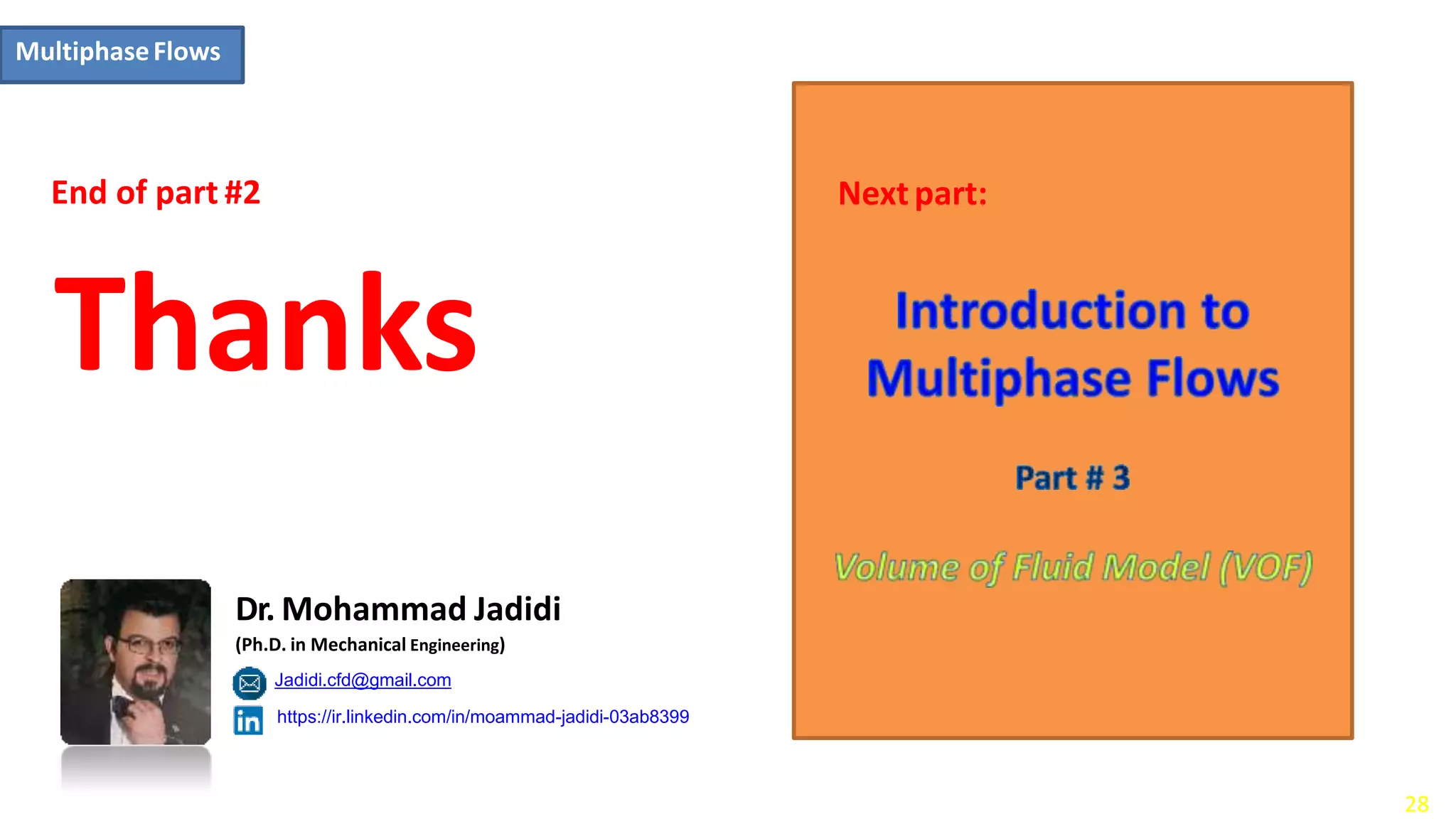This document discusses choosing an appropriate multiphase flow model. It describes the key multiphase flow models in ANSYS Fluent including the volume of fluid (VOF) model, mixture model, Eulerian model, and discrete phase model (DPM). The document provides guidance on selecting a model based on factors like flow regime, particulate loading, phase coupling, and computational requirements.

